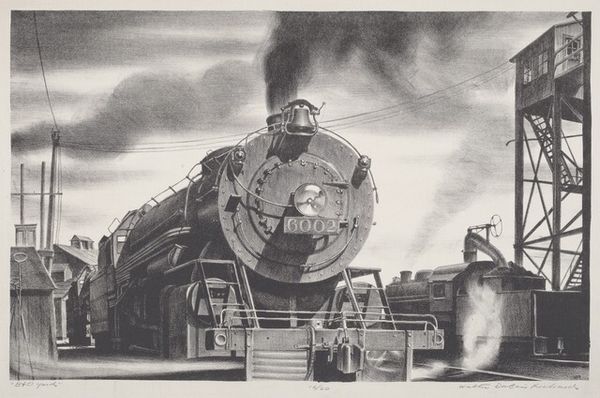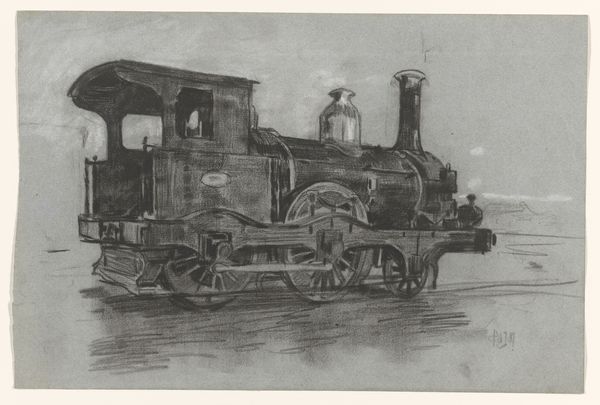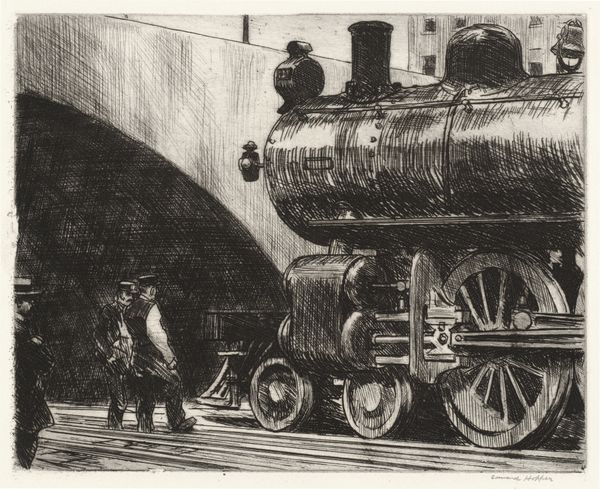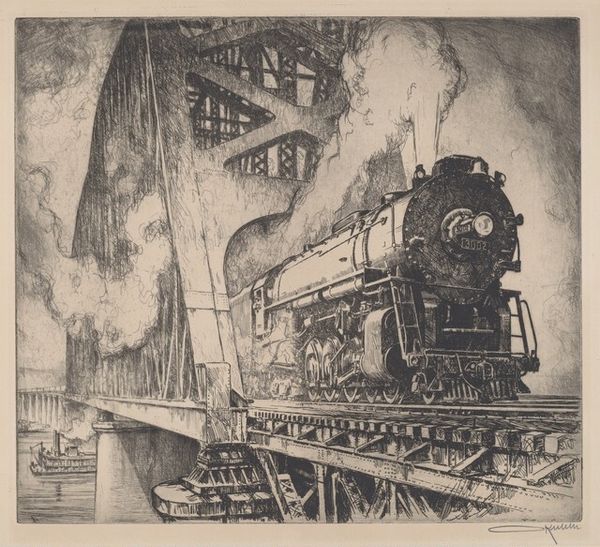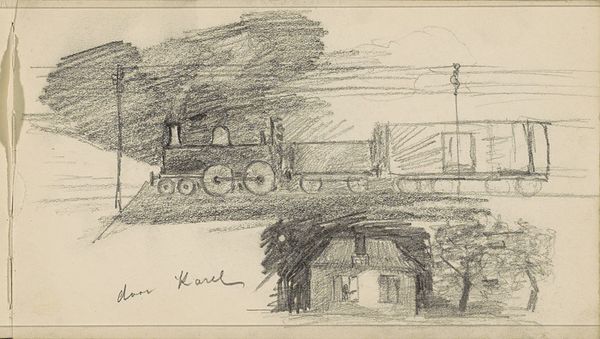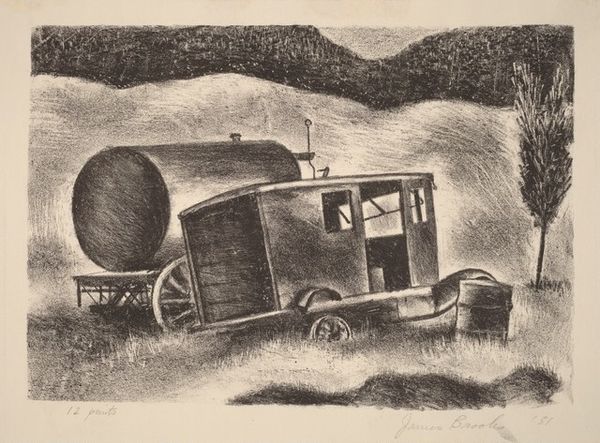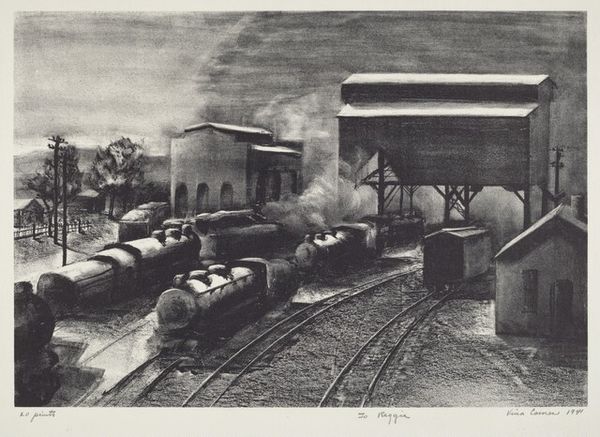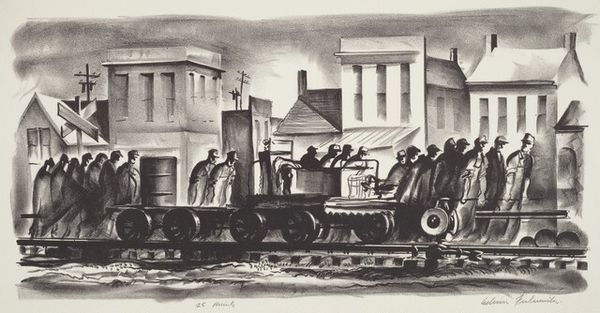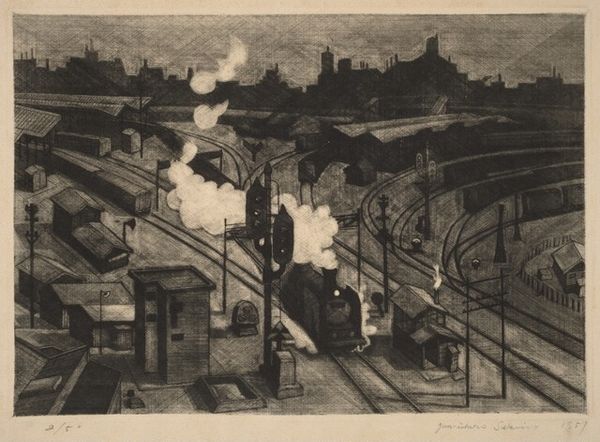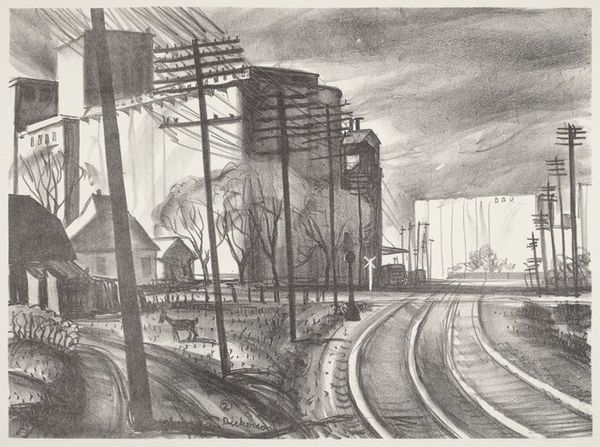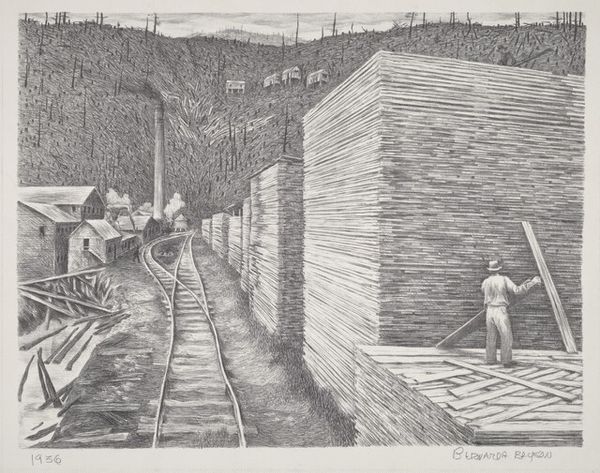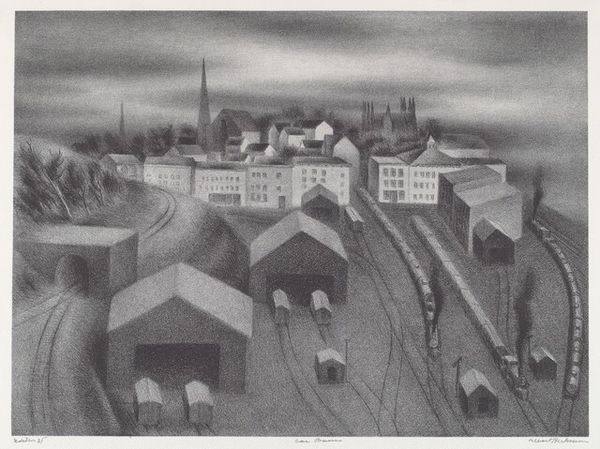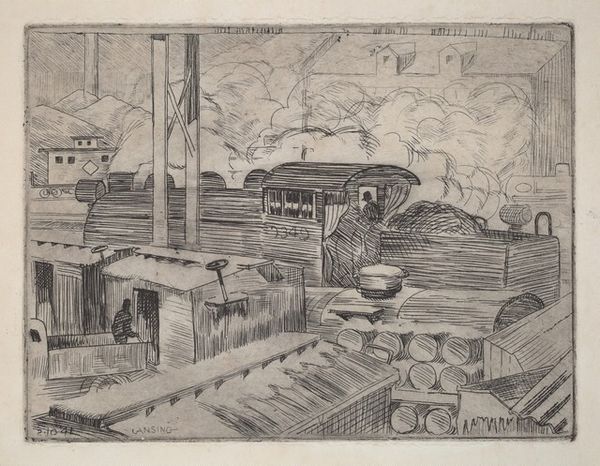
drawing, print, graphite
#
drawing
# print
#
landscape
#
graphite
#
cityscape
#
modernism
#
realism
Dimensions: image: 273 x 415 mm sheet: 380 x 531 mm
Copyright: National Gallery of Art: CC0 1.0
Curator: Welcome. Here we have Hubert Davis' "9 O'Clock Town," likely created around 1945. It's a compelling cityscape rendered with graphite, perhaps as a drawing or a print. The scene is dominated by trains in the foreground with some industrial architecture mixed with homes behind them. What’s your initial reaction to it? Editor: Immediately, a stillness strikes me. Despite the subject being a train station, normally bustling with activity, there's an unnerving quietness, enhanced by the monochromatic tones. And the scale! The trains feel colossal, dwarfing everything, even the town itself. Curator: That feeling resonates, especially considering the period. The end of World War II saw significant shifts in American life and culture. Symbolically, the trains themselves represent transition, connection, and even the weight of industrial progress, something that certainly shaped cities in this period. Editor: Precisely. And if you look closer at the homes beyond the trains, their details are softened, almost blurred. Could this point to the effects of industry encroaching on domestic life? It feels like a critique of modernization and rapid urban growth. Curator: A fitting analysis! Consider also the lone figure walking beside the train; seemingly small and insignificant next to such imposing machines. This might suggest a theme of individual experience and insignificance within this industrial behemoth, also perhaps revealing an expressionist approach through the rendering of emotion more so than an accurate portrayal of realism. Editor: Right, like a tiny actor lost on a gigantic stage! How might the public have interpreted this image in its time? Given that the Modernist style also favored social critique, there's probably a double layer of analysis built into this, a stark reflection of how machines and society were co-evolving, influencing personal existence. Curator: That is something that can never be taken lightly, this social evolution that art represents and documents for coming generations! This piece surely sparks some vital questions, reflecting the complex relationship between human development and industrial forces. It speaks of resilience but also fragility in the face of progress. Editor: Indeed, as technology develops more each year we learn new benefits, as well as face newly discovered problems. "9 O'Clock Town" doesn't give easy answers, but it certainly challenges the viewers, then and now, to reflect on how the world has shifted through time.
Comments
No comments
Be the first to comment and join the conversation on the ultimate creative platform.
